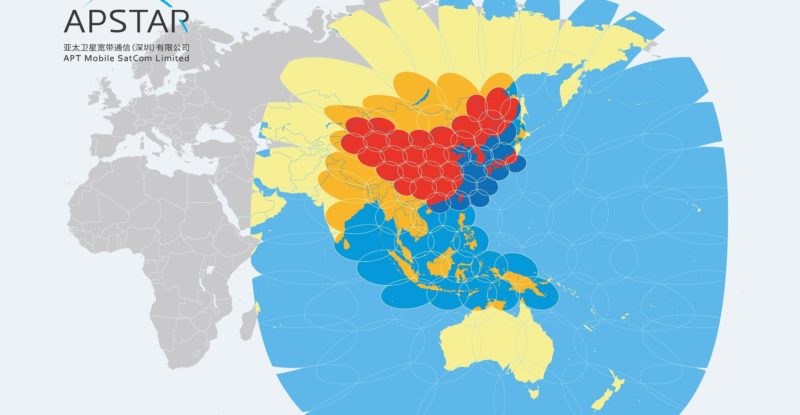
China’s APT Mobile Satcom (APSATCOM) expects its new APSTAR-6D high throughput satellite will support inflight connectivity trials for Chinese domestic airlines this year, despite the challenges posed by the COVID-19 crisis.
“The COVID-19 virus had an extremely negative impact on domestic airlines’ finances due to the large reduction of flying for several months. While passenger travel has recovered quite well, finances are still the biggest challenge for airlines. Despite this challenge we do see strong interest from airlines in IFC and expect that trials will begin in 2021,” APSATCOM’s head of aero business unit, Jing Jing Li, tells Runway Girl Network.
Historically, Ku-band capacity was very constricted in China. But APSTAR-6D provides multiple gigahertz of new Ku capacity over China and high-density routes around East Asia. Now there is “plenty of capacity for all of the installed aircraft plus thousands more”, says Jing Jing Li.
In the past a single large beam was utilized over all of China. Now [APTSTAR-6D] employs many smaller spot beams which will provide a much stronger signal over all of geography of China. This provides much better RF performance for aircraft over all air routes. Better RF performance translates directly into a better passenger usage experience.
Some Chinese operators have gravitated to Ka-band IFC. For instance, satellite operator China Satcom is now supporting transmissions for Qingdao Airlines, which is a customer of China’s FTS Technologies. China Satcom’s ChinaSat-16 is a high throughput satellite operating in the Ka-band.
But with Ku coverage and capacity greatly improved in the region and “excellent Ku-band IFC avionics systems” available to airlines, APSATCOM anticipates significant growth for the APSTAR-6D service from foreign and Chinese long-range aircraft, and foresees “a large quantity of domestic aircraft installations in Ku-band”, according to Jing Jing Li.
Panasonic Avionics, which helped APSATCOM design APSTAR-6D, recently reported that it is now availing of capacity from the satellite for its aviation clients, after the spacecraft formally went live for revenue service. And the firm confided that it has seen an immediate improvement from using the satellite as part of its new Gen-3 network. Gogo also has an agreement to leverage APSATCOM’s Ku-band network, including APSTAR-6D capacity.
Installation and testing at overseas teleports were affected by COVID-19 travel restrictions, which delayed the start of APSTAR-6D’s service. However, APSATCOM has been able to assist its customers using local partners. “Together we are now helping our customers to complete their installations and commissioning,” says Jing Jing Li.
Panasonic counts 21 Asian carriers – representing over 800 aircraft – as customers for its eXConnect-branded Ku IFC, including many of the region’s leading airlines, such as Air China, All Nippon Airways, Cathay Pacific Airways, China Airlines, China Eastern, China Southern, EVA Air, Garuda Indonesia, Hainan Airlines, Hong Kong Airlines, Japan Airlines, Singapore Airlines, Thai Airways and Xiamen Airlines.
Together, the combination of Ku HTS and the Gen-3 network will enable the inflight entertainment and connectivity giant to offer a streaming class of service to airlines.
Asked by RGN if passenger expectations have reached the point where a streaming class of service is the cost of doing business for airlines, and if MB packages will go by the wayside in time, Jing Jing Li says:
We must defer to the IFC service providers on this type of question. We can say that we believe Chinese passengers wish to have the same excellent mobile telecommunication service they have, and have to come to expect, everywhere and they do not wish to have restricted services when flying. We at APSATCOM want to enable an IFC service which meets these high passenger expectations.
Panasonic also offers an IPTV service on international aircraft flying into and over China, and reports improved quality via APSTAR-6D.
Live broadcast of sports or current affairs also “could be an excellent new future service on Chinese aircraft”, notes Jing Jing Li.
Outside of aero, activity on APSTAR-6D is increasing across all vertical markets, with the APSATCOM executive confirming that the satellite has been “widely used in maritime, offshore, land emergency, media live broadcast etc. So far, it has served thousands of vessels including fishing boats and merchant ships.”